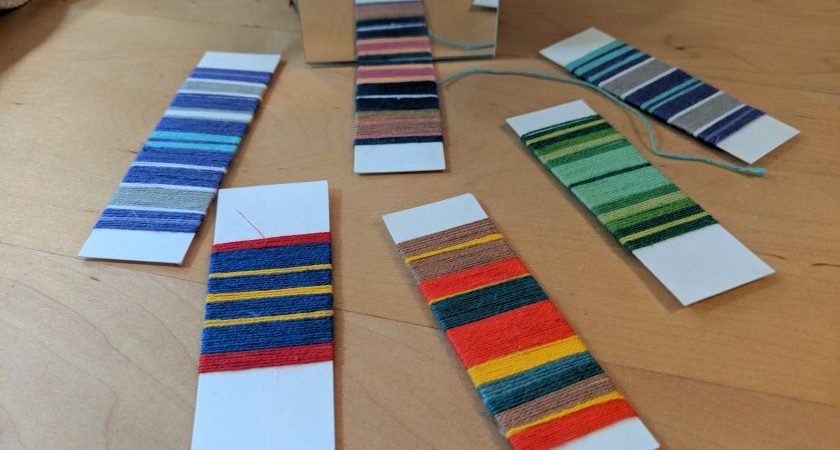I am writing a series of posts describing the process of weaving. The first post discusses how woven fabric differs from knitted fabric. Last week I talked about looms. Before actually getting into the physical process of putting a warp on the loom, I wanted to say just a little bit about what goes into designing woven cloth. (You can also see a video version of the this blog post on Youtube.)
Before beginning, I have an idea of what I want to make. Kitchen towels will have different parameters than a baby blanket or a rug. First I want to decide what yarn to use. How thick do I want it to be? How often will it be washed? Does it need to withstand hard wear or need to provide warmth? These questions will determine what type of yarn I choose. For a kitchen towel, it needs to be fairly thin, but absorbent, and also be easy to wash. Therefore, cotton or linen somewhere around 8/2 or 10/2 in size would be a could choice. For a blanket, however, I want it to be warm and soft, so wool makes a good choice. But, if it’s a baby blanket, I want it to be easily washable so I might go with a larger cotton yarn instead. Once I have selected a yarn, I also need to decide on the size and shape of the finished object.

Next, I want to consider patterning and color. Am I using a weave structure to create a pattern? Or am I using different colors in my warp and weft yarn to create stripes or plaid designs? If my design is mainly based on color, I may use some tools to design the warp. For instance, I can make a thread wrapping to play with stripes using the actual yarn. Or I could paint or use colored pencil to quickly try out ideas. With paint, I can even add “weft” to try to approximate what the actual cloth will look like.
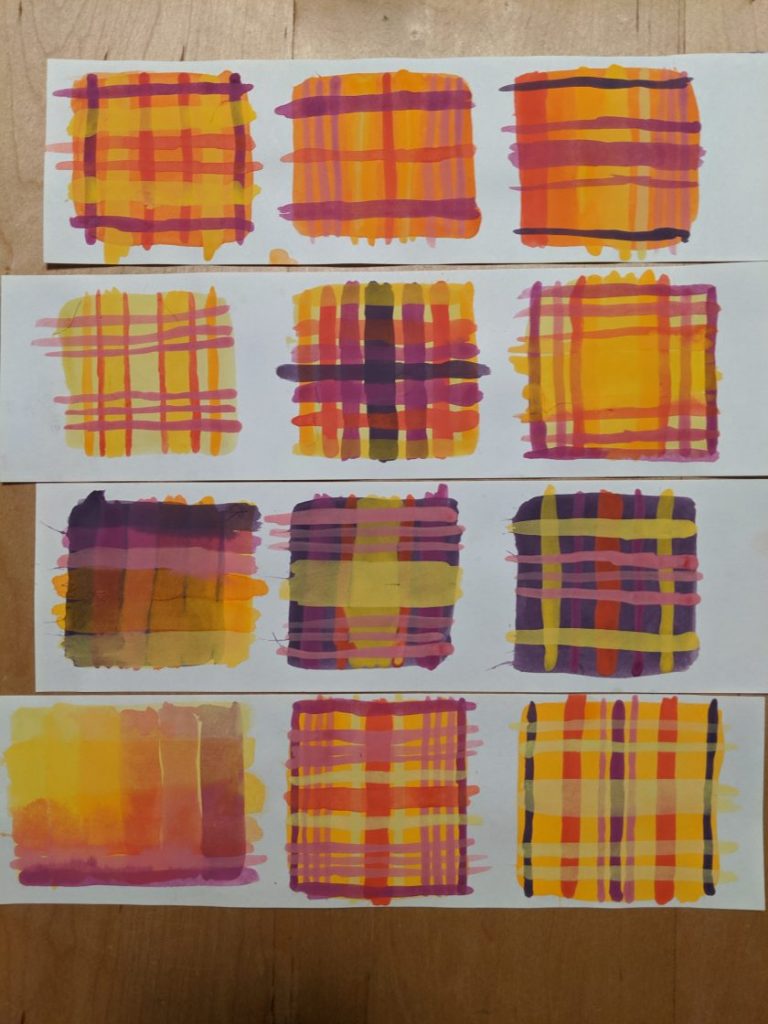
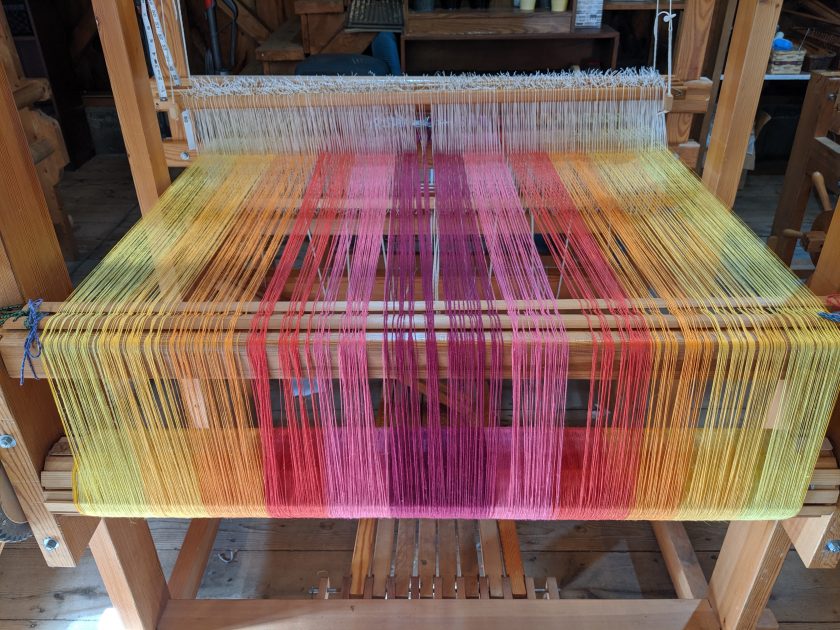
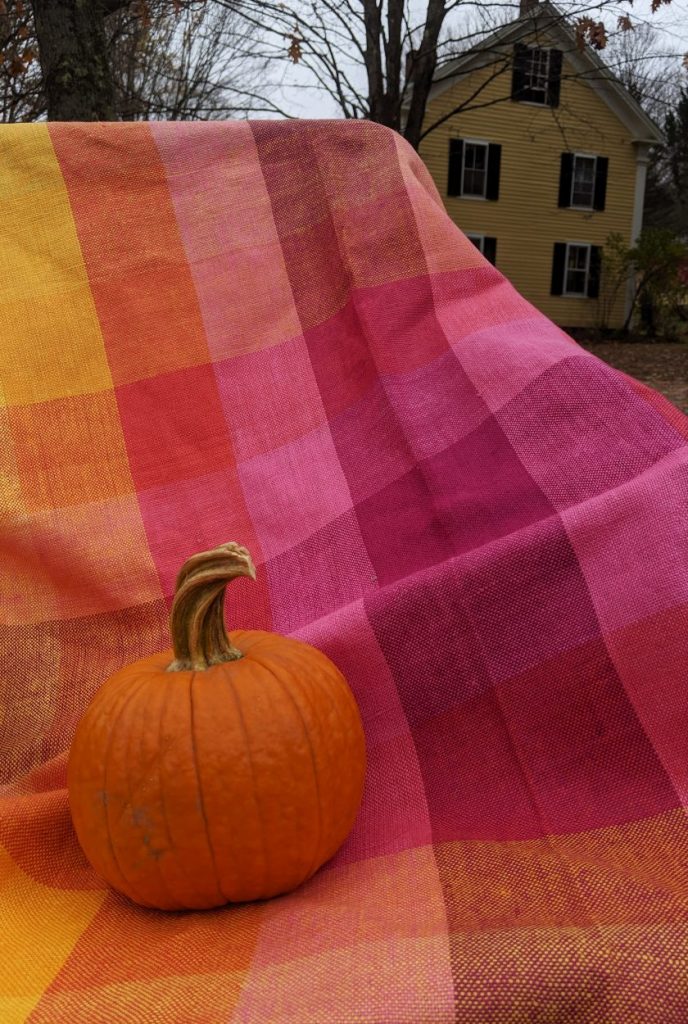
On the other hand, I may be creating a patterned weave. There are many books and magazines that contain pattern drafts. I can select from one of them or design my own from scratch. Or, I can take an existing design and tweak it.
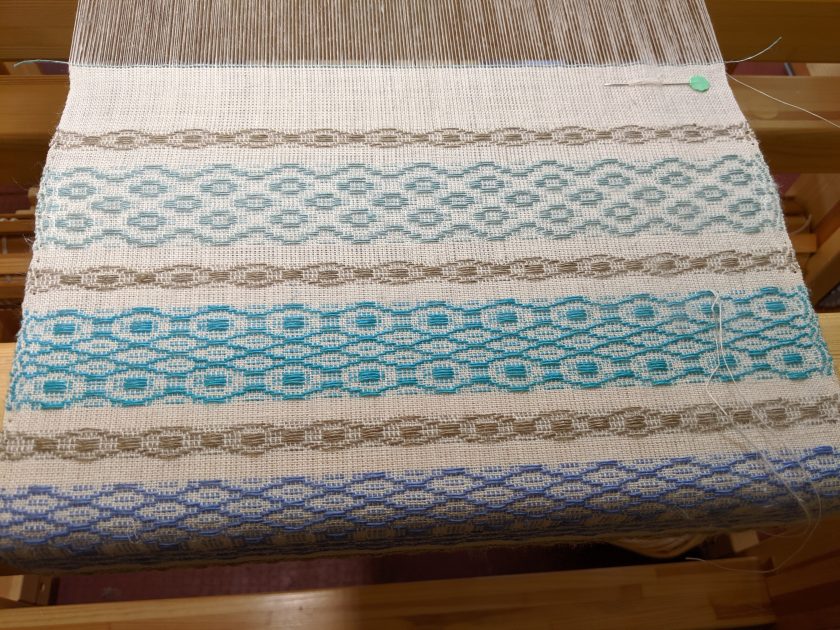
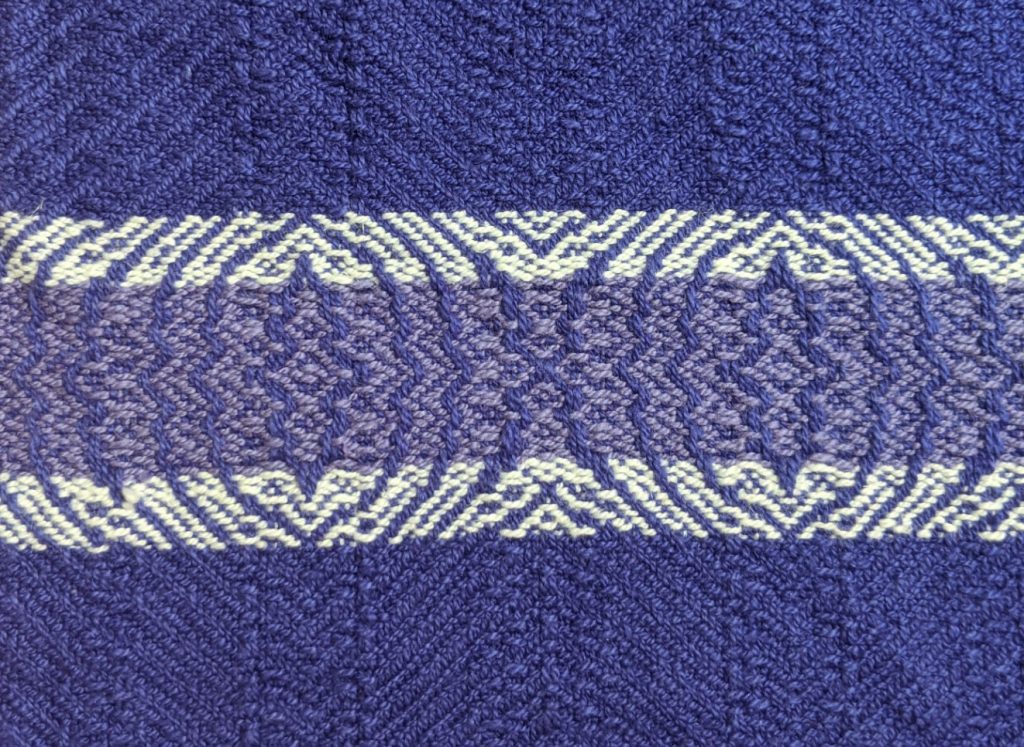
To understand a woven pattern, I will generally use a notation system called a draft. A draft is just a concise method of saying which shaft each thread is on (the threading), which shafts are connected to which treadle (the tie-up), and which treadles are pressed to create the pattern (the treadling). As seen in the example draft, I can use many treadling variations with one threading to create different patterns.
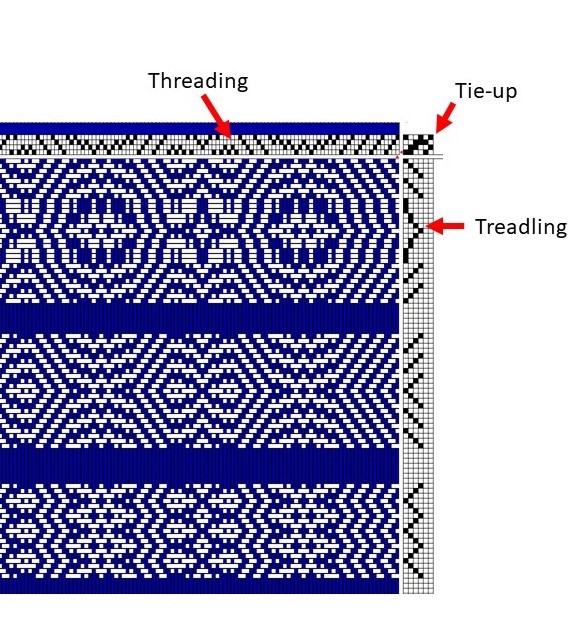
This is just a short overview of what goes into designing woven cloth, but hopefully it provides a window into the process. Next week I will begin talking about how the warp goes on the loom.
